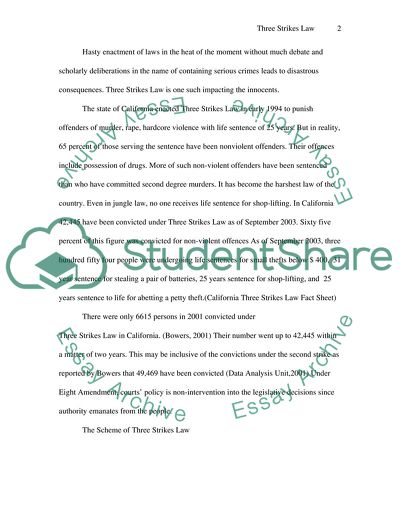Cite this document
(The Three Strikes Law of California Term Paper Example | Topics and Well Written Essays - 2500 words, n.d.)
The Three Strikes Law of California Term Paper Example | Topics and Well Written Essays - 2500 words. https://studentshare.org/law/1721788-three-strikes-law
The Three Strikes Law of California Term Paper Example | Topics and Well Written Essays - 2500 words. https://studentshare.org/law/1721788-three-strikes-law
(The Three Strikes Law of California Term Paper Example | Topics and Well Written Essays - 2500 Words)
The Three Strikes Law of California Term Paper Example | Topics and Well Written Essays - 2500 Words. https://studentshare.org/law/1721788-three-strikes-law.
The Three Strikes Law of California Term Paper Example | Topics and Well Written Essays - 2500 Words. https://studentshare.org/law/1721788-three-strikes-law.
“The Three Strikes Law of California Term Paper Example | Topics and Well Written Essays - 2500 Words”. https://studentshare.org/law/1721788-three-strikes-law.


